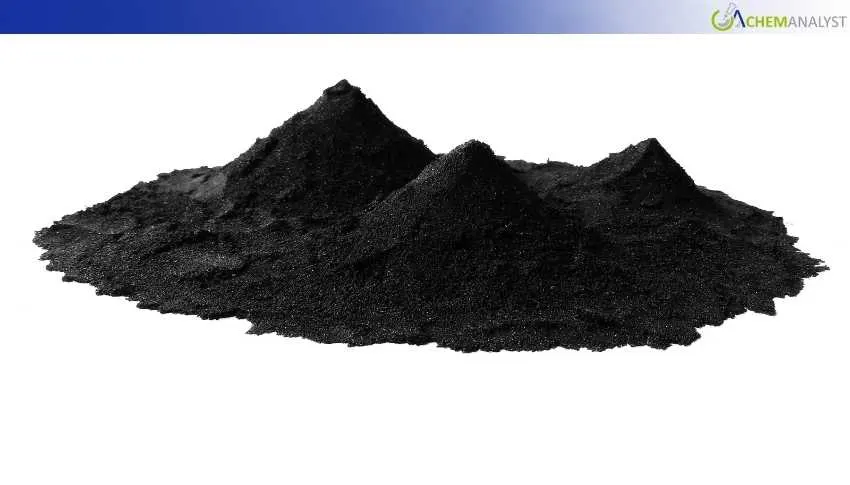Welcome To ChemAnalyst

The global carbon black market remains stable in the primary production and consumption areas, with stable downstream tyre/rubber industry demand allowing for steady trade flows. Exports of Hard Grade N326 in Qingdao, China, remain solid to southeast Asian buyers (India, Malaysia, Thailand, and Vietnam) with a balance of supply and modest port congestion. The Seoul market is quiet, with domestic producers maintaining normal production, and imports are meeting everyday demand, which is holding sentiment steady. Novorossiysk continues to provide reliable FOB volumes with European tyre manufacturers, especially in Germany, with smooth port operations and steady offtake under contracts. In the U.S., request from the tire/rubber industry has been consistent, with distributor accounts managing stock to meet everyday consumption. In summation, the global supply chain is functioning efficiently with production, logistics, and regional demand is balanced. The fundamentals of the market suggest a balanced environment, with carbon black trading steadily while waiting for regional demand shifts from seasonal, and/or macro factors.
The carbon black market wrapped the first half of November 2025 in a stable but finely balanced manner, as several hubs in Asia, the U.S., and Europe saw an overall lack of volatility, although feedstock values shifted. Crude eased and natural gas increased, generating mixed cost implications for producers. Nevertheless, carbon black pricing was stable across major export and domestic channels, reflected healthy production run-rates, measured downstream demand, and the resilience of trade flows.
In China, carbon black Hard Grade N326 FOB Qingdao was unchanged as manufacturers in Shandong province and the other nearby provinces kept output steady and inventories moderate. We were able to ease some margin pressure from lower crude prices, while natural gas saw a slight uptick, increasing energy inputs marginally. Notional circumstances saw an overall neutral margin impact. Carbon black exports to India, Malaysia, Thailand, and Vietnam remained stable, with buyers in these regions actively buying and replenishing normal inventory levels rather than stocking aggressively. Port congestion along the Qingdao region averaged just over two days, resulting in minor adjustments to shipping pace, but nothing material backlog. Carbon black supply/demand structure within the region and its respective relationship for black carbon showed balance, supported by steady offtake from tire and rubber manufacturers.
South Korea reflected this tranquillity. Carbon black N326 FOB Seoul was steady, as domestic producers, providing almost nine-tenths of domestic tons, were running smoothly. Imports, making up the balance, were not an issue with supply. Spot discussions were flat, insulated from much outside action by a well-positioned production capacity, stable demand, and just a minor watch-list pressure from higher freight premium costs on outbound containers. Korea’s carbon black market held to a tight trading range and a neutral tone with no demand shortage or supply surplus.
The US market showed some divergence. In Texas, carbon black N326 DEL was down to by 3.8% with USD 1,238/tonne, a minor reduction based on domestic rather than global factors. Carbon black distributors were adjusting prices to manage inventory, seeing consistent but modest demand from the tire and rubber market. With no issues on the port side and freight costs mostly irrelevant as an influence, the adjustment was localized based on supply, cautious buying from downstream and minor downward cost movements in feedstock.
Meanwhile, Russian carbon black N220 FOB Novorossiysk, which has firm pricing, was moving consistent volumes into Germany and other neighboring European buyers without interruption. Carbon black producers were maintaining consistent allocations, the ports were operating, and buyers were taking their regular contracted volumes, leaving the market in balance.
The carbon black market exhibited remarkable stability across major global hubs, despite divergent regional catalysts. Mixed feedstock signals, predictable export flows, steady tire-sector offtake and disciplined production all helped to stabilize prices. Localized softness, especially in this case the DEL Texas dip, shows sensitivity, but the overall carbon black landscape continues to suggest balance rather than volatility, which keeps the market in a muted, stable, near-term outlook.
We use cookies to deliver the best possible experience on our website. To learn more, visit our Privacy Policy. By continuing to use this site or by closing this box, you consent to our use of cookies. More info.
